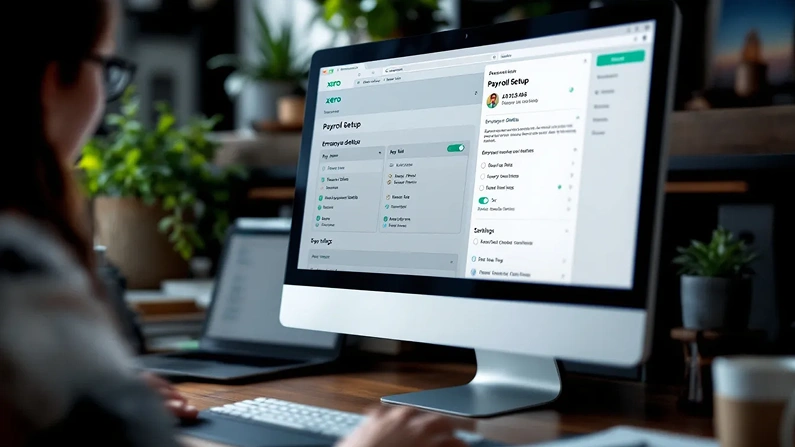Key Takeaways
What Is Single Touch Payroll Australia (STP)? – Overview of STP as an ATO initiative for real-time payroll reporting.
STP Phase 2 Changes in 2025 – Expanded reporting requirements including detailed earnings and employment info.
Benefits for Employers and Employees – Reduced admin, improved accuracy, and employee access to tax and super info.
Setting Up STP – Choosing software, connecting to the ATO, and lodging the first pay event.
Reporting Requirements – Lodging pay events, updates, and annual finalization.
Common Mistakes and Prevention – Typical errors and how to avoid them.
Special Situations – Reporting for closely held payees, back payments, and exemptions.
Year-End Finalization – Reconciling payroll and issuing tax-ready income statements.
Penalties for Non-Compliance – Fines and how to prevent them.
Tips for Smooth STP Management – Automation, reminders, and expert support.
Case Study – Example of payroll simplification with STP.
Future of STP Reporting – Upcoming improvements and features.
Single Touch Payroll (STP) has reshaped how Australian businesses report salaries, PAYG withholding, and superannuation. For SMEs and small employers, understanding when to start reporting and how to start STP reporting is essential to avoid penalties and keep employee details accurate. This guide explains everything owners and managers need to know in 2025 — from setup through to year-end finalization.
1. What Is Single Touch Payroll Australia (STP) and STP Reporting?
STP is an Australian Taxation Office (ATO) initiative requiring employers to send payroll information to the ATO every pay run via touch payroll STP reporting. Single Touch Payroll (STP) is an Australian government initiative that requires businesses to report pay information to the ATO digitally for each pay run. Instead of waiting for year-end, wages, tax, and super data are submitted in real time through STP-enabled software during each pay period.
Key goals:
Improve accuracy of tax and super reporting, including year to date tax figures and other STP information
Make it easier for employees to access up-to-date income statements in myGov through the ATO website
Reduce paperwork for businesses, especially those with fewer employees
Enable the ATO to use payroll data to pre-fill employees’ tax returns and other employment-related income details
2. Single Touch Payroll Phase 2 in 2025: What’s Changed in STP Data Reporting
Phase 2 of STP is now mandatory for all employers registered with the Australian Tax Office. Important updates include:
Detailed earnings reporting: Ordinary time earnings, bonuses, overtime, allowances, and paid leave must be itemized.
Tax treatment codes: Employers report how each payment is taxed (e.g., salary, commission, return-to-work).
Employee information: Start/end dates, employment basis, and child support deductions are sent each pay.
Disaggregation of gross: Totals are split into components for transparency.
Additional information: Employers need to report extra details such as reason for cessation of employment as part of the updated requirements.
Leave and allowances: Under STP Phase 2, employers must report additional details such as leave, allowances, and employment basis.
3. Benefits for Employers and Staff with Single Touch Payroll Australia and STP Reporting
Reduced administrative burden — no more annual PAYG summaries to print at the end of the financial year.
Staff see their income and tax withheld almost instantly via myGov, including year to date tax and super information.
Better accuracy reduces corrections at tax time.
The ATO can identify underpaid super or tax issues early, avoiding large penalties.
Access to services such as the ATO Indigenous Badge program, which supports Indigenous employers and employees.
Smart Digits helps SMEs configure STP-ready payroll software and ensure ongoing compliance by offering tailored solutions that streamline payroll processes.
4. Setting Up STP: Choosing STP-Enabled Payroll Software and Connecting STP Data to the ATO
Step 1: Choose STP-Enabled Software
Most cloud accounting systems, including popular options like Xero, MYOB, and QuickBooks, offer comprehensive STP functionality to help businesses comply with reporting requirements. It is important to ensure your software subscription includes the necessary Phase 2 features to meet the latest Australian Tax Office standards. Regularly updating your software and verifying these capabilities will help maintain seamless STP reporting and avoid compliance issues.
Step 2: Link to the Australian Tax Office
Use your software’s setup wizard to connect via the ATO Business Portal or call the ATO to register your software ID. Registered agents and tax professionals can talk you through the process and confirm your setup to ensure compliance.
Step 3: Review Payroll Data
Clean up employee records before your first submission to ensure accuracy and compliance:
Verify Tax File Numbers (TFNs) and personal details are correct and up to date to avoid processing errors.
Confirm employee start dates and employment types are accurately recorded to reflect the correct pay and reporting categories.
Check super fund membership details, including stapled funds where applicable, to ensure superannuation contributions are directed appropriately.
Taking these steps before your initial STP submission helps prevent data mismatches and reduces the need for corrections later, streamlining your payroll reporting process from the start.
Step 4: Lodge Your First Pay Event (Pay Run)
Run a normal pay cycle and lodge the data electronically to report employee pay details. The ATO will send confirmation messages to acknowledge receipt and processing of your submission. Key points to follow:
Ensure all employee tax, superannuation, and wage information is accurately reported for each pay period.
Verify payroll data before lodgement to prevent errors and compliance issues.
Submit an update event if corrections are needed after the initial lodgement.
Lodge pay events on or before each payday to meet ATO deadlines.
Timely reporting maintains compliance with Australian Tax Office requirements.
Accurate reporting enables employees to access up-to-date income and superannuation details via myGov.
Use STP-enabled payroll software to streamline the lodgement process and reduce manual errors.
Keep records of all submissions and confirmations for auditing and reconciliation purposes.
4.a How Xero’s Single Touch Payroll (STP) Works
Xero simplifies STP reporting by automatically compiling payroll data each pay run and securely sending it to the Australian Tax Office. With Xero’s STP-enabled payroll software, businesses can easily lodge pay events, update employee details, and finalize STP data through an intuitive interface. Xero also offers a demo company feature, allowing businesses to test STP setup and reporting without sending actual data to the ATO. This helps ensure accuracy and confidence before going live.
4.b How Smart Digits Can Help with Xero STP Setup
Smart Digits specializes in helping businesses implement STP-enabled payroll using Xero. Their experts assist with selecting the right Xero subscription plan, configuring payroll settings to meet STP Phase 2 requirements, and linking the software to the ATO. Smart Digits also provides training and ongoing support to ensure smooth, compliant STP reporting, reducing the risk of errors and penalties. By partnering with Smart Digits, businesses can streamline their payroll processes and focus on growth with peace of mind.
5. Reporting Requirements for STP Reporting and Managing STP Data
Lodge a Pay Event on or before each payday or pay period to ensure timely reporting of employee payroll information to the Australian Tax Office.
If you discover any errors or need to update previously submitted information, submit an Update Event promptly to correct the STP data and maintain compliance.
Finalize your STP data by 14 July each financial year. This finalization confirms that all payroll information for the year is accurate and complete, allowing employees’ income statements to be “tax ready” for lodging their tax returns through myGov and the ATO website.
6. Common Mistakes and How to Avoid Them in Single Touch Payroll Australia and STP Reporting
Mistake | How to Prevent |
|---|---|
Late lodgement | Automate submissions and set calendar reminders |
Incorrect super guarantee | Use correct ordinary time earnings base |
Using wrong tax treatment codes | Check latest ATO tables or get advice from a registered tax or BAS agent |
Not updating terminated staff | Report termination date on final pay |
Incomplete employee details | Regularly review and update employee records to ensure accuracy |
Failing to finalize STP data | Set reminders to complete STP finalization by 14 July each financial year |
Not reconciling payroll data | Perform monthly reconciliations between payroll software and ATO reports |
7. Handling Special Situations in STP Reporting and Single Touch Payroll Phase
Closely Held Payees – Owners and directors of closely held payees with turnover under $10 million can report payroll information quarterly instead of each pay run, reducing reporting frequency while staying compliant.
Back Payments & Lump Sums – Correctly classify back payments and lump sums (e.g., Lump Sum E for unused leave, Lump Sum A for other payments) to ensure accurate tax and super reporting.
Child Support Deductions – Report any child support deductions withheld from wages each pay period to keep ATO records accurate.
JobMaker or Other Credits – Ensure payroll software captures government incentives like JobMaker credits correctly in STP data.
Exemptions and Deferrals – Some small or remote employers may be exempt or eligible for deferral from STP Phase 2 reporting; check with the ATO or software provider to confirm.
8. Year-End Finalization of STP Data and Income Statements
At the end of the financial year:
Reconcile wages, PAYG, and superannuation accounts within your accounting ledger.
Execute a finalization event using your payroll software.
Inform employees that their income statements are now “tax ready,” with year-to-date tax and superannuation information accessible.
Retain all relevant records for a minimum of five years.
Smart Digits provides EOFY payroll reviews to ensure your figures match ATO data and helps clients plan for a smooth year-end process.
9. Penalties for Non-Compliance with Single Touch Payroll Australia and STP Reporting
The Australian Tax Office may impose Failure to Lodge on Time (FTL) penalties if STP data isn’t submitted correctly or promptly. Penalties start at $210 per statement period for micro-employers and increase for larger businesses. Persistent non-compliance can lead to audits and further fines.
To avoid penalties, employers must ensure timely and accurate STP reporting each pay period. Keeping employee details updated and using compliant payroll software helps maintain smooth submissions. Seeking help from registered tax or BAS agents can also support compliance and prevent costly issues.
10. Tips for Smooth Single Touch Payroll Australia Management and STP Reporting
Automate where possible – Use direct lodgement features so STP runs in the background.
Set reminders – Calendar alerts or task management apps help keep deadlines front of mind.
Reconcile regularly – Check ledger balances match ATO submissions each month.
Seek expert help – Registered tax and BAS agents can assist with compliance and reporting.
11. Case Study: Dental clinic simplifies Payroll with Single Touch Payroll
A Melbourne-based dental clinic with 15 staff faced challenges managing manual PAYG summaries annually. Smart Digits transitioned them to Xero Payroll with STP Phase 2 compliance. This change automated their reporting processes, reducing year-end administration from several days to under an hour.
The automation not only saved significant time but also minimized errors that frequently occurred with manual payroll entries. The clinic’s team could now dedicate more effort to patient care and clinic operations rather than payroll compliance. Integration with the Australian Tax Office ensured real-time, accurate reporting of employee details and tax information, enhancing compliance and reducing penalty risks.
With STP Phase 2, the dental clinic benefited from detailed payroll transparency. Earnings components such as allowances and leave were clearly itemized, providing both management and employees with better insight into pay structures. Employees gained instant access to their year-to-date tax and superannuation information through the ATO’s online portal, improving satisfaction and trust.
This example demonstrates how adopting STP-enabled payroll software and adhering to updated reporting standards streamlines payroll management, increases accuracy, and fosters effective communication between employers, employees, and tax authorities.
12. Looking Ahead: The Future of Single Touch Payroll Australia and STP Data Reporting
Future improvements may include:
Real-time super validation to catch late payments
ATO notifications inside software for faster issue resolution
Integration with e-invoicing for a full view of wages vs. revenue
Enhanced automation for pay event corrections to reduce manual errors
Improved employee self-service portals for easier access to pay and super details
Mobile-friendly payroll software enabling on-the-go management and reporting
Automated reminders for STP finalization deadlines to avoid penalties
Seamless updates aligned with ATO legislative changes to ensure ongoing compliance
Final Thoughts on Single Touch Payroll Australia and STP Reporting
STP is designed to simplify reporting, but it demands accurate setup and disciplined processes. With the right software provider and expert support, compliance becomes routine — freeing you to grow your business with confidence and the ability to focus on your core operations. Investing time upfront to choose STP-enabled payroll software that meets your business needs, regularly updating employee details, and understanding your reporting obligations can prevent costly errors and penalties. Additionally, partnering with registered tax or BAS agents ensures you stay informed about legislative changes and best practices, making STP reporting a seamless part of your payroll cycle.
Need help with STP?
Contact Smart Digits today. Our payroll specialists can set up your system, train staff, and handle ongoing reporting on your behalf so you stay compliant and penalty-free. We offer tailored solutions and a clear plan to support your business’s transition to full STP compliance.





